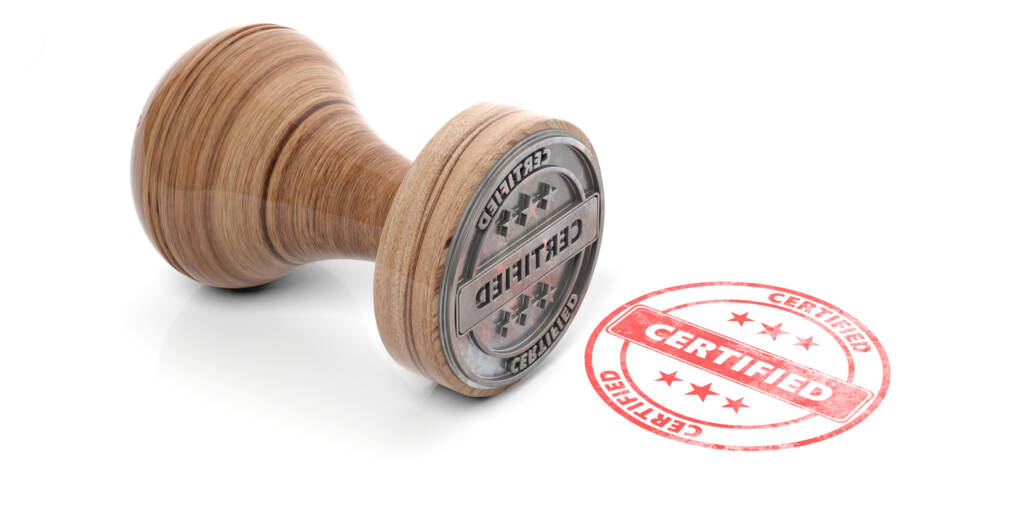Certifications: Getting The Heart Of The Compliance Process Right
The case can be made that certs are where compliance starts. Your employees attest they’ll do the right thing, and then you have to make sure they do. Here’s how to go about it
Certifications is an area of compliance we return to frequently in this space, for good reason. Certs are a foundational part of the compliance process. You’re asking people to make a promise. And by putting it down in writing—that is, formalizing it—you’re trying to tie people more strongly to that promise. It’s not very different, in that sense, from a child reciting the pledge of allegiance in front of her classmates, a politician taking the oath of office, or someone signing a promissory note for a loan. It’s all a form of certification. And while firms can’t take employees entirely at their word—monitoring is, sadly, a must—the case can be made that certifications are where compliance starts. Your employees attest that they will do the right thing, and then it’s a matter of being sure they carry through on those attestations.
It’s important, then, to get your certifications right, which means getting on top of the process. The following will help you do just that. Technology can now also make the certs process significantly easier, but more on that later.
THE PROCESS
Prep: Prepare, prepare, prepare, and then prepare some more. As in any significant undertaking, many of the things that can go wrong in an involved process like certs can be headed off with thoughtful, thorough planning. Time spent preparing now will be time saved later not scrambling to fix things.
- Policy Changes—On the regulatory side, have there been any changes since the last round of certifications that will affect this round?
- Lessons Learned—On the company side, is there anything you should change based on the results from the last round?
- Verify Recipients—An absolute basic that’s quite easily overlooked. Verifying recipients now means easier reconciliations later.
- System Updates—Now’s the time to update alerts, dates, or certification language as appropriate.
- Pre-Cert Notification—Now’s the time to consider sending out a pre-cert notification, as in: “This is coming. Get ready for it.”
- Employee Training—Never to be underestimated, especially if there’s the perception completing certs is difficult. Consider classes or at least a Q&A session.
- Broker-Dealer Feeds—Are your feeds complete? Good broker-dealer feeds and fully-automated compliance software will make the certs process much easier.
- General Awareness—How do you want to publicize this? A reminder on the compliance platform dashboard? A blurb on the company message board?
- Due Dates—How far before the regulatory due date do you set your firm due date? People go on holiday or have work-travel, and can miss the certs period for totally legitimate reasons.
2. Test: While listed here as phase two of the certs process, it’s still technically part of the preparation to the actual issuing. This is where you put all your thoughtful, thorough planning into action in a controlled, limited manner. Testing can go a long way in heading off problems that may have have once seemed an inevitable part of the certs process.
- Yourself—Review and program all of the above factors and considerations and send the certification sequence to yourself. This is your first opportunity to hone the issuing.
- Compliance Team—Now test your grand strategy on another set of sharp, seasoned eyes. This is your second opportunity to hone the issuing.
- Control Group—Now it’s on to a batch of test users: a small group of reliable employees who will be receiving the final certs. All of the above should leave you with a well-honed sequence.
3. Issue: You’ve done your homework, done loads of testing, and have a sequence that’s as well-prepared and well-considered as it can be. But even the best laid plans can’t account for everything. As the certifications go out, expect some confused responses to come back in.
- Issue Date And Time—This is the day and time you issue the certs, and gets at maximizing recipient response. Is the day close to a holiday? What’s the best time of day to send them?
- Coverage—As already mentioned, when these certs go out you’re going to get a lot of activity coming back in. Do you have proper team coverage for the inevitable questions you’re going to get?
4. Follow Up: Certifications have gone out, there’s a lot of back and forth, and as people start completing their certs you start noticing who hasn’t. Maybe it’s the usual suspects. Maybe it’s the new folk. Following are some potential motivators, whoever they happen to be.
- Reminders—These are straight-up email reminders. How often do you send them? At what point do the procrastinators just tune you out?
- Vary The Medium—There’s more to messaging than email. Make full use of the automation in your compliance platform. Make phone calls. For higher-ups, a knock on the door has been known to get results.
- Escalation—At what point do you copy managers? At what point do you suspend a dawdler’s ability to execute his or her pre-approved trades?
- Good Software—Compliance software can make or break this follow-up phase of the certs process. Can you set automated reminders? Can you set automated escalation points?
- Fun & Games—Make it a competition. Consider doing a department-by-department completion scorecard. Offer a prize to the winning team.
- Think Outside The Box—One enterprise financial firm was known to use its disaster recovery phone service, part of its business continuity plan, to robo-call procrastinators. Whatever it takes.
5. Review: Congratulations. You’ve made it to the other side. Your internal due date has passed, though work remains. Some employees never did complete their certs, which puts the firm in SEC violation territory. Time for a final push, then some review, and then a look ahead.
- Check & Check Again—Make sure you know who did and who didn’t complete their certs. You started off verifying recipients. Now’s the time to double check against that initial list.
- Review Results—Are there results you need to review? For certain answers? For specific items that needed to be addressed in certain certifications? Not all certs are created equal.
- Late Filers—The SEC is most concerned your firm has a certs policy in place and did everything it could to deal with late filers, including issue fines. Make sure you document everything.
- Thinking Ahead—What worked? What didn’t? Did some of your messaging methods work better than others? Document any feedback and keep it handy for next time. Your compliance software ought to be capable of providing all the documentation capability you need.
THE TECH
Compliance software can make all the difference in the certification process. Look for the ability to combine certs. Look for a full suite of customizable alerts, so you can set and forget reminders and escalation points. Look for the ability to build a single certification that can go out to multiple audiences, or the ability to design a cert that asks a series of complex questions. Look for a reporting suite with automatic result tracking, automatic report delivery, and graphical report and case-management capabilities.
Certs always present a certain level of challenge. You are dealing with people, after all. People who have their own inscrutable reasons for doing or not doing what they’re tasked with. But a calculated and streamlined process, paired with the right kind of software, will go a long way toward making the whole endeavor more efficient and more bearable for everyone involved.
JANUARY: THE MONTH OF CERTIFICATIONS
Now that we’ve kicked off the newest month in the newest year with a detailed look at the certs process, we want to call your attention to what’s coming in the next two weeks in this space. On January 11 and 18 you’ll hear from the London Stock Exchange’s Head Of Central Compliance, David Stephens, on why certifications need to be so much more than just a box-ticking exercise, and come away with ten key insights on the matter. And don’t forget to download our Certifications Checklist, a complementary resource to this week’s blog.



